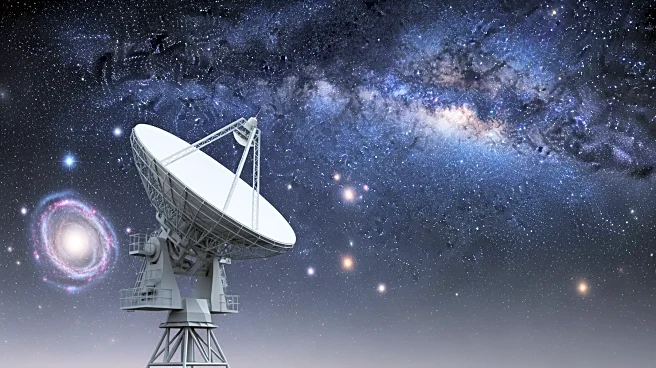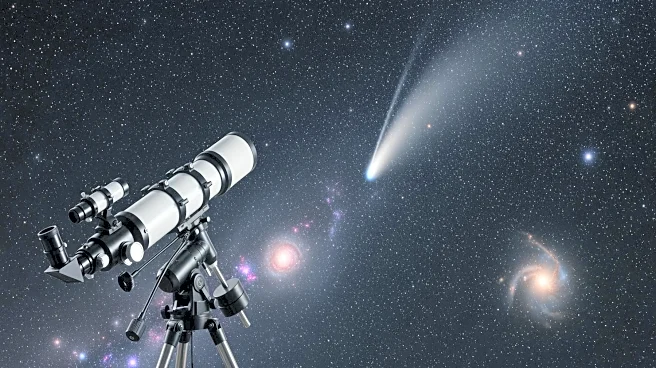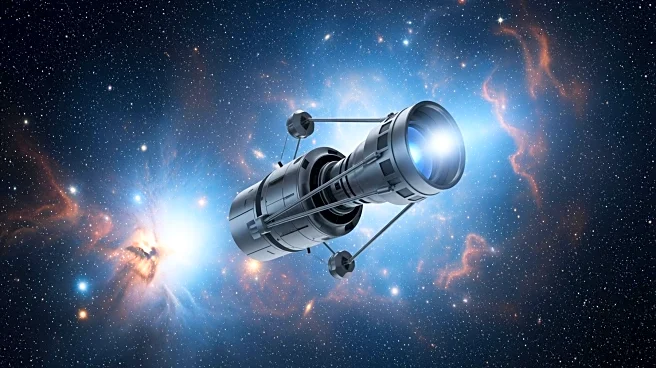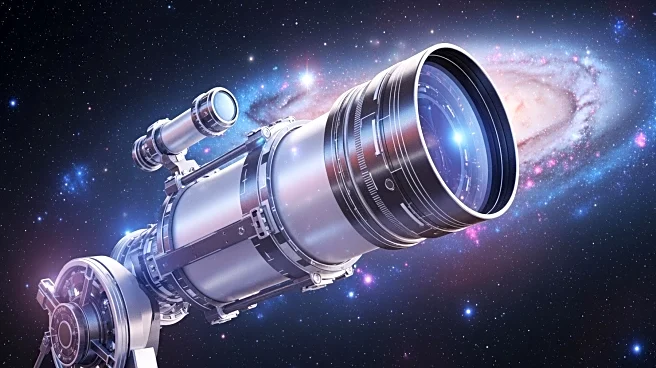What's Happening?
Astronomers have unveiled a groundbreaking radio image of the Milky Way, constructed from over 40,000 hours of data collected through the GaLactic and Extragalactic All-sky MWA (GLEAM) and GLEAM eXtended
(GLEAM-X) surveys. This image, captured using the Murchison Widefield Array telescope, provides a detailed view of the galactic plane, revealing the life cycle of stars from birth to death. The radio wavelengths penetrate dust clouds, offering insights into star formation and the remnants of exploded stars. The image marks a significant milestone in astronomical research, showcasing the galaxy's complexity in unprecedented detail.
Why It's Important?
This radio image enhances our understanding of the Milky Way's structure and the processes governing star formation and death. By capturing low-frequency radio waves, astronomers can study regions previously obscured by dust, gaining insights into the galaxy's evolution. The data collected could inform future research and technological advancements in radio astronomy. The image also highlights the capabilities of the Murchison Widefield Array and sets a benchmark for future projects like the SKA-Low telescope, which promises even greater sensitivity and resolution.
What's Next?
The completion of the SKA-Low telescope, expected in the next decade, will further advance radio astronomy, allowing for more detailed observations of the Milky Way and other galaxies. Researchers will continue to analyze the data from the GLEAM and GLEAM-X surveys, potentially uncovering new astronomical phenomena. The findings may influence future space exploration missions and the development of new technologies for observing the universe.
Beyond the Headlines
The ability to observe the Milky Way in radio wavelengths opens new avenues for understanding cosmic phenomena and the universe's history. This research underscores the importance of international collaboration in astronomy and the potential for technological innovation to expand our knowledge of the cosmos. The ethical considerations of space exploration and the impact of such discoveries on our understanding of humanity's place in the universe are also worth exploring.











